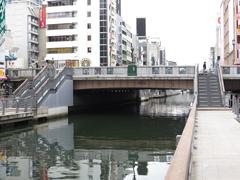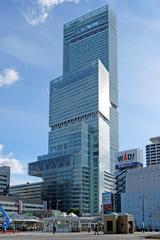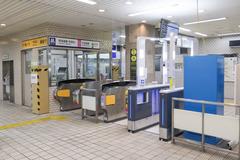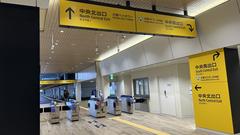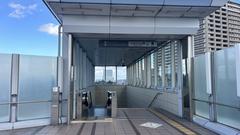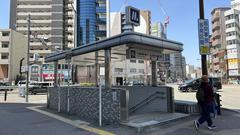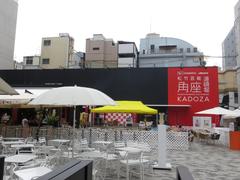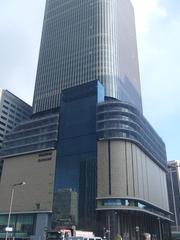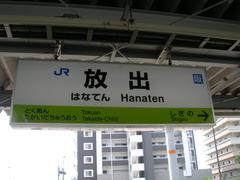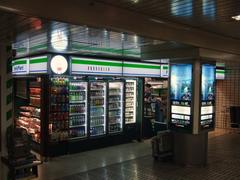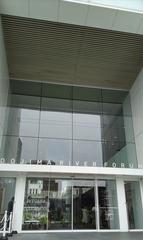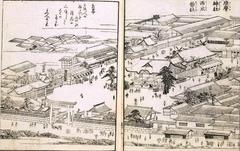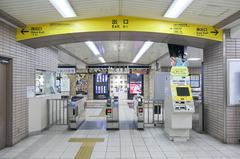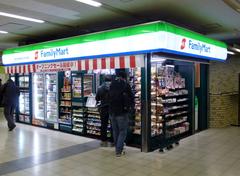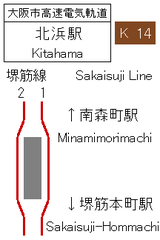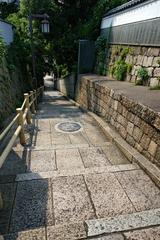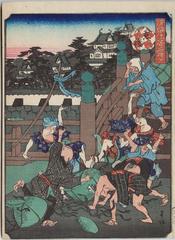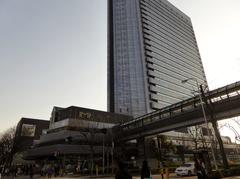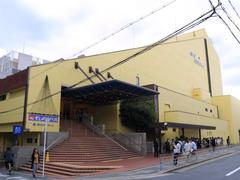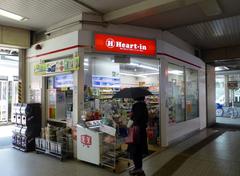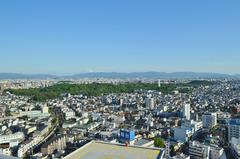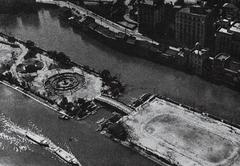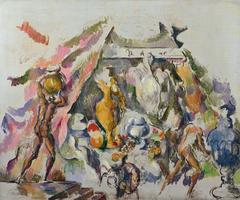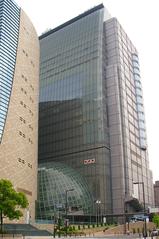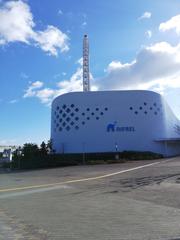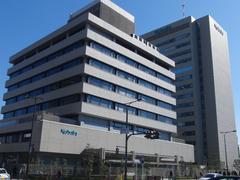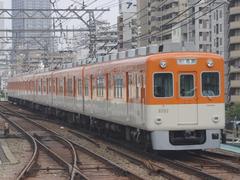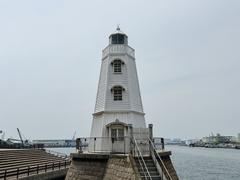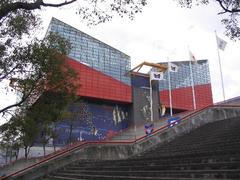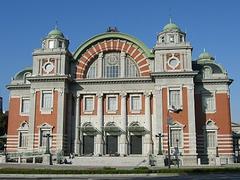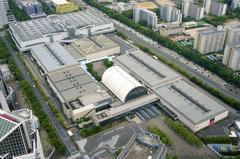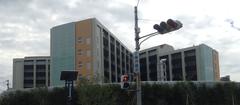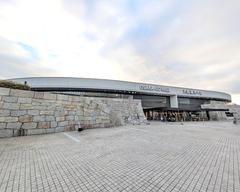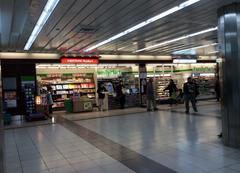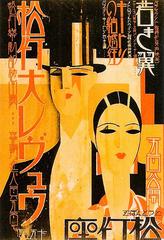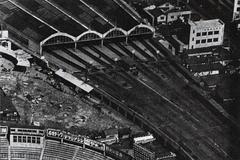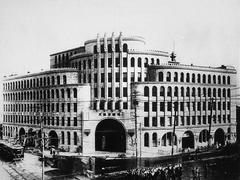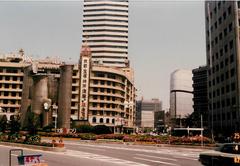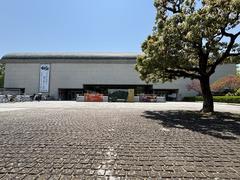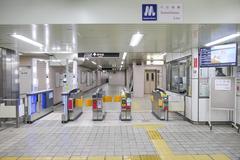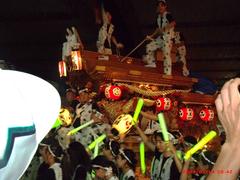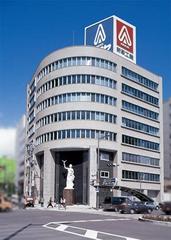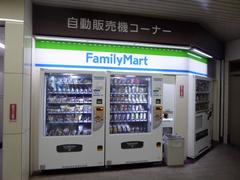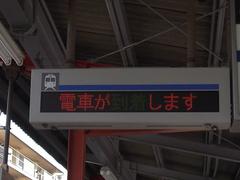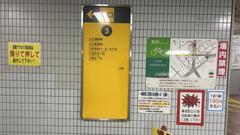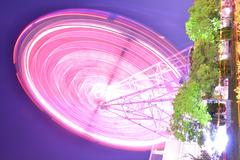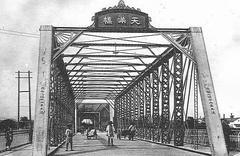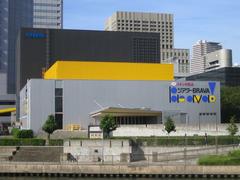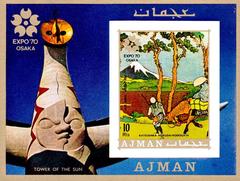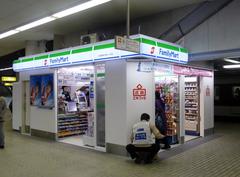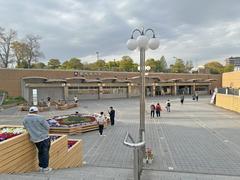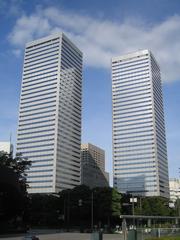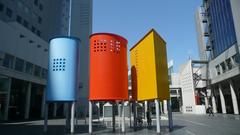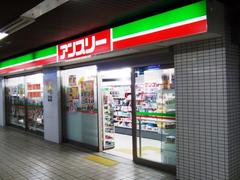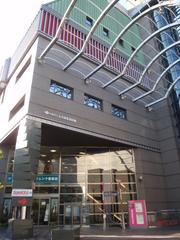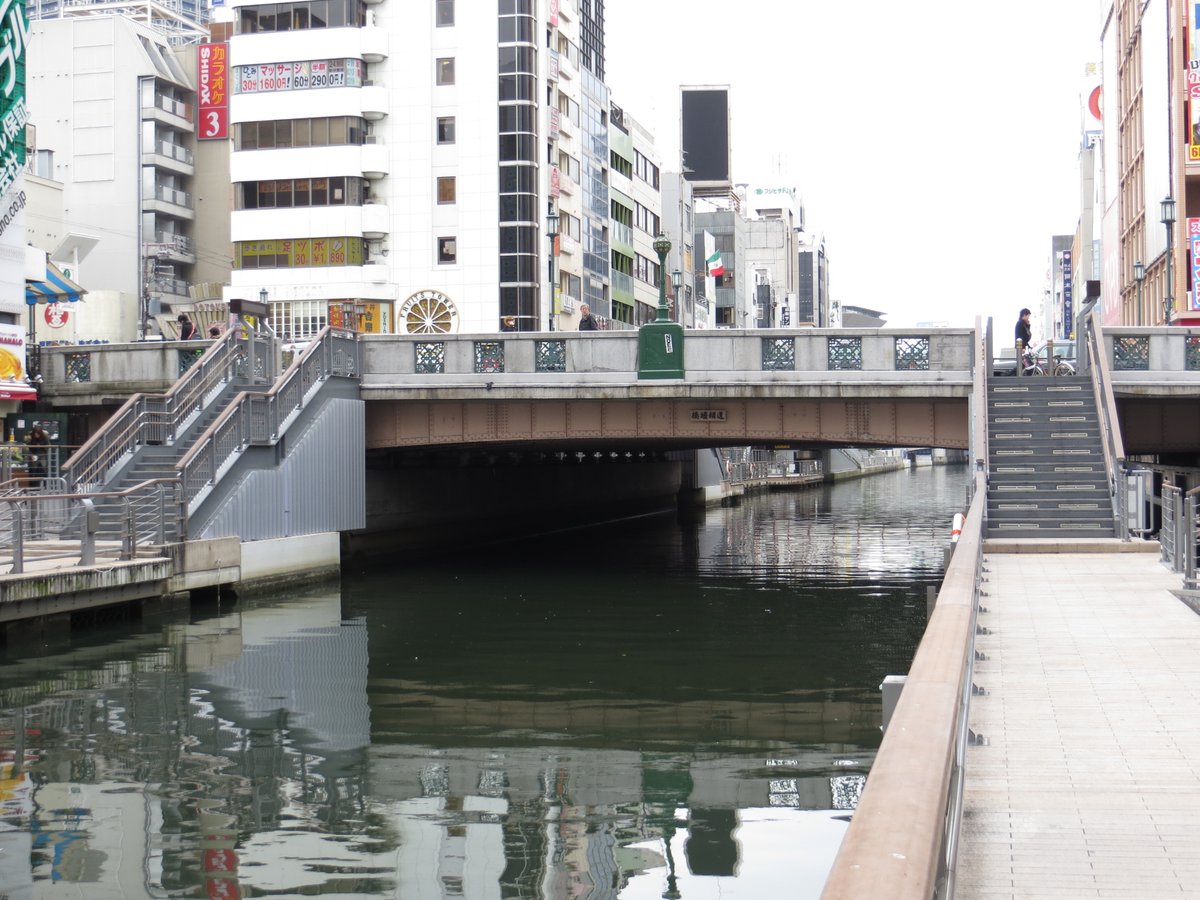
Visiting Dōtonboribashi: A Comprehensive Guide to Osaka’s Iconic Bridge
Date: 01/08/2024
Introduction
Dōtonboribashi (道頓堀橋), commonly known as Dotonbori Bridge, is a landmark that epitomizes the vibrant culture and history of Osaka, Japan. Situated in the heart of the bustling Dotonbori district, the bridge spans the Dotonbori Canal, a waterway completed in 1615 that was initially constructed to bolster the local economy by facilitating trade and transportation (Live Japan). Over the centuries, the area has transformed from a commercial hub into one of Japan’s premier entertainment districts, renowned for its theaters, cinemas, shops, and vibrant nightlife (Off the Track Japan). Today, Dotonbori Bridge is not only a symbol of Osaka’s rich historical heritage but also a cultural hotspot that attracts millions of visitors annually. This guide aims to provide a comprehensive overview of Dotonbori Bridge, covering its historical significance, iconic landmarks, cultural impact, and practical tips for visitors to make the most of their experience.
Table of Contents
- [Historical Significance of 道頓堀橋 (Dotonbori Bridge)](#historical-significance-of-道頓堀橋-dotonbori-bridgehistorical-significance-of-道頓堀橋-dotonbori-bridge)
- [Iconic Landmarks and Attractions](#iconic-landmarks-and-attractionsiconic-landmarks-and-attractions)
- [The Glico Man Sign](#the-glico-man-signthe-glico-man-sign)
- [Kani Doraku Crab Sign](#kani-doraku-crab-signkani-doraku-crab-sign)
- [Cultural and Social Significance](#cultural-and-social-significancecultural-and-social-significance)
- [Visitor Tips for a Memorable Experience](#visitor-tips-for-a-memorable-experiencevisitor-tips-for-a-memorable-experience)
- [Visiting Hours and Best Time to Visit](#visiting-hours-and-best-time-to-visitvisiting-hours-and-best-time-to-visit)
- [How to Get There](#how-to-get-therehow-to-get-there)
- [Must-Try Foods](#must-try-foodsmust-try-foods)
- [Shopping and Entertainment](#shopping-and-entertainmentshopping-and-entertainment)
- [Safety and Accessibility](#safety-and-accessibilitysafety-and-accessibility)
- [Additional Activities](#additional-activitiesadditional-activities)
- [River Cruises](#river-cruisesriver-cruises)
- [Hozenji Yokocho](#hozenji-yokochohozenji-yokocho)
- [FAQ](#faqfaq)
- [Conclusion](#conclusionconclusion)
- [Call to Action](#call-to-actioncall-to-action)
Historical Significance of 道頓堀橋 (Dotonbori Bridge)
Dotonbori Bridge, located in the heart of Osaka’s bustling Dotonbori district, is a landmark that epitomizes the city’s vibrant history and culture. The bridge spans the Dotonbori Canal, which was completed in 1615 by Nariyasu Doton and Yasui Douboku during the early Edo Period. This canal was initially constructed to boost the local economy by facilitating boat traffic and trade (Live Japan). Over the centuries, Dotonbori evolved from a commercial hub into one of Japan’s premier entertainment districts. By the late 19th and early 20th centuries, the area was lined with theaters, cinemas, and shops, making it a popular destination for both locals and tourists (Off the Track Japan). The iconic neon signs and billboards that now characterize Dotonbori began to appear during this period, further cementing its status as a cultural and commercial hotspot.
Iconic Landmarks and Attractions
The Glico Man Sign
One of the most recognizable features of Dotonbori Bridge is the Glico Man sign, an advertisement for the Glico confectionery company. Installed in 1935, the sign depicts a runner crossing the finish line and has become a symbol of Osaka. The sign has undergone several updates over the years, with the latest version featuring LED lights installed in 2014 (Hannah on Horizon). Tourists flock to the bridge to take photos mimicking the runner’s pose, making it a must-visit spot for anyone in Osaka.
Kani Doraku Crab Sign
Another iconic landmark near Dotonbori Bridge is the Kani Doraku crab sign. Located at the southeast corner of Ebisu Bridge, this large, animated billboard features a crab with moving legs and is a popular photo spot. The restaurant itself is famous for its charcoal-grilled king crab, a delicacy that attracts both locals and tourists (Live Japan).
Cultural and Social Significance
Dotonbori Bridge is more than just a physical structure; it is a cultural icon that embodies the spirit of Osaka. The area around the bridge is known for its lively atmosphere, characterized by neon lights, bustling crowds, and a plethora of street food vendors. The local saying “kuidaore,” which means to go bankrupt after spending an enormous amount of money on food, perfectly captures the essence of Dotonbori (Japan Travel).
The bridge also serves as a focal point for various cultural events and festivals. For instance, the Tenjin Festival, one of Japan’s three main festivals, features a water procession with over 100 boats navigating the Okawa River, just north of Osaka Castle. This festival attracts around 1.3 million visitors annually and includes a spectacular fireworks display (Matcha JP).
Visitor Tips for a Memorable Experience
Visiting Hours and Best Time to Visit
Dotonbori Bridge is accessible 24/7, but it truly comes alive after sunset when the neon lights illuminate the area. The best time to visit is in the evening, around an hour or two before sunset, to experience the transition from day to night (Lonely Planet).
How to Get There
Dotonbori Bridge is easily accessible from Namba Station on the Osaka Metro Midosuji Line. It is about a 4-minute walk from Exit 14 of the station. For those coming from other parts of Osaka, walking east from the Midosuji side to the Sakaisuji side is the most straightforward route (Live Japan).
Must-Try Foods
No visit to Dotonbori Bridge is complete without indulging in some of Osaka’s famous street food. Takoyaki (octopus dumplings) and okonomiyaki (savory pancakes) are must-try dishes. The area is also home to numerous takoyaki stands that use particularly large cuts of octopus, ensuring a delicious and satisfying experience (Live Japan).
Shopping and Entertainment
Dotonbori is not just about food; it is also a shopping paradise. The Don Quijote store on Dotonbori has six stories filled with everything from snacks to Sanrio and Pokemon merchandise. The store also features the unique Ebisu Ferris Wheel, the only oval-shaped Ferris wheel in the world, offering stunning views of the area (Hannah on Horizon). For those interested in a more traditional shopping experience, the nearby Shinsaibashi-suji shopping arcade offers a mix of modern and traditional shops, making it a perfect destination for retail therapy (Japan Travel).
Safety and Accessibility
Dotonbori Bridge and its surrounding areas are generally safe for tourists, but it is always advisable to stay vigilant, especially in crowded places. The area is well-lit and patrolled by local authorities, ensuring a secure environment for visitors. In terms of accessibility, the bridge and its surroundings are equipped with ramps and elevators, making it accessible for people with disabilities. Public restrooms are also available in the vicinity, ensuring a comfortable experience for all visitors (Japan Travel).
Additional Activities
River Cruises
One of the best ways to experience Dotonbori is by taking a river cruise along the canal. The Tombori River Cruise offers a 20-minute tour that provides a unique perspective of the area’s vibrant atmosphere and iconic landmarks (Off the Track Japan).
Hozenji Yokocho
For a quieter, more traditional experience, visitors can explore Hozenji Yokocho, an old-fashioned alleyway beside Dotonbori. This tranquil street is known for its traditional shops, restaurants, and the Hozenji Temple, where worshipers sprinkle water on the moss-covered Fudo-myoo statue (Japan Travel).
FAQ
Q: What are the visiting hours for Dotonbori Bridge?
A: Dotonbori Bridge is accessible 24/7, but it is best enjoyed in the evening when the neon lights are most vibrant.
Q: Are there any ticket prices for visiting Dotonbori Bridge?
A: Visiting Dotonbori Bridge itself is free of charge. However, some attractions and activities in the area might have their own entry fees.
Q: How do I get to Dotonbori Bridge from Namba Station?
A: Dotonbori Bridge is a short 4-minute walk from Exit 14 of Namba Station on the Osaka Metro Midosuji Line.
Q: What foods should I try when visiting Dotonbori?
A: Must-try foods include takoyaki (octopus dumplings) and okonomiyaki (savory pancakes).
Q: Is Dotonbori Bridge accessible for people with disabilities?
A: Yes, the bridge and its surroundings are equipped with ramps and elevators, making it accessible for people with disabilities.
Conclusion
Dotonbori Bridge stands as a microcosm of Osaka’s dynamic history, culture, and culinary delights. From its origins in the early Edo period to its modern-day status as an entertainment mecca, Dotonbori offers a unique blend of historical and contemporary attractions that cater to a wide range of interests. Whether you are captivated by the iconic Glico Man sign, intrigued by the animated Kani Doraku crab billboard, or simply eager to indulge in Osaka’s famous street food, Dotonbori Bridge promises an unforgettable experience. The area’s accessibility, vibrant nightlife, and plethora of activities, such as river cruises and visits to the tranquil Hozenji Yokocho, ensure that there is something for everyone. As you plan your visit, keep in mind the practical tips provided, such as the best times to visit and how to navigate the area efficiently. Ultimately, Dotonbori Bridge is more than just a landmark; it is a testament to Osaka’s enduring spirit and a must-visit destination for anyone exploring the city (Japan Travel, Hannah on Horizon).
Call to Action
For more travel guides and tips, download our mobile app, check out our other related posts, or follow us on social media for the latest updates.
References
- Live Japan (2023). ‘Exploring Dotonboribashi: History, Visitor Tips, and Nearby Attractions in Osaka.’ Live Japan
- Off the Track Japan (2023). ‘Comprehensive Guide to Visiting Dotonbori Bridge in Osaka.’ Off the Track Japan
- Hannah on Horizon (2023). ‘The Ultimate Guide to Dotonbori.’ Hannah on Horizon
- Japan Travel (2023). ‘Dotonbori: The Heartbeat of Osaka.’ Japan Travel
- Matcha JP (2023). ‘Tenjin Festival: One of Japan’s Top Three Festivals.’ Matcha JP
- Lonely Planet (2023). ‘Guide to Osaka, Japan.’ Lonely Planet
- Your Travel Guide (2023). ‘Best Things to Do in Dotonbori, Osaka.’ Your Travel Guide
- Journey Compass (2023). ‘Dotonbori Osaka Guide.’ Journey Compass
- Trip to Japan (2023). ‘Things to Do in Dotonbori: Osaka’s Brightest District.’ Trip to Japan
- Japan Travel Note (2023). ‘Exploring Dotonbori: A Food Lover’s Paradise.’ Japan Travel Note
